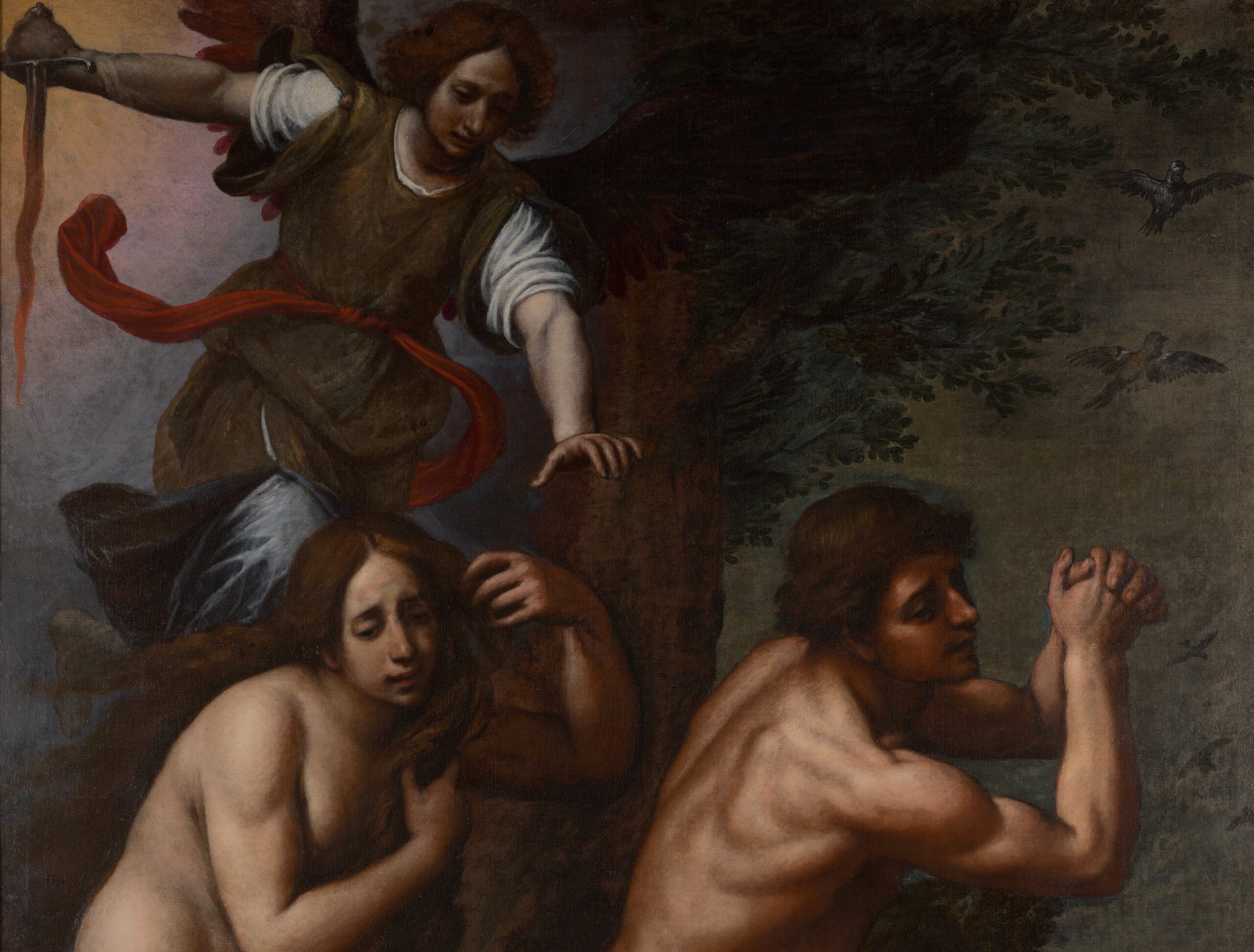By Tim Gihring //

Domenico Passignano (Italian, 1559-1638), The Expulsion of Adam and Eve from Paradise, 1627, oil on canvas. Gift of John Morton Morris in honor of Patrick Noon, 2020.54.2
In 2020, Mia acquired three monumental paintings—all from the 1620s, all kept in the palace of the powerful Barberini family in Rome for more than 300 years. But until recently, the museum could only show one. The others required restoration. Now, thanks to a generous grant from the Bank of America Art Conservation Project, they are all on view in Mia’s Baroque gallery, forming a floor-to-ceiling display of high drama.
The 2022 grant specifically enabled the renewal of Domenico Passignano’s Expulsion of Adam and Eve from Paradise by the Midwest Art Conservation Center, which stabilized, cleaned, and improved the appearance of the painting. The painting had been commissioned in 1627 by Cardinal Francesco Barberini, a nephew of the pope at the time, Urban VIII. Both were widely read, intellectually curious—supporters of Galileo even though Francesco, as Grand Inquisitor of the Roman Inquisition, was forced to investigate him. The painting is a a remarkably emotional depiction of Adam and Eve appearing desperate and distraught as they’re escorted out of Eden by an angel.
“I’m thrilled that we have this gorgeous wall of newly restored paintings,” says Rachel McGarry, Mia’s Elizabeth MacMillan Chair of European Art. “Together, these three paintings have transformed Mia’s Baroque gallery, giving visitors a new appreciation for Italian seventeenth-century art and emphasizing the central role art played in society, politics, and life during that period.”
The grant was one of 237 that the Bank of America Art Conservation Project has funded since the program began in 2010, a legacy encompassing thousands of artworks around the world, from Assyrian reliefs to Chinese woodblock prints to mobiles by Alexander Calder. The program previously helped conserve two other masterworks at Mia: Frank Stella’s colorful 1969 painting Tahkt-I-Sulayman Variation II and Max Beckmann’s 1946 triptych Blind Man’s Buff.
Brian Siegel, head of Global Arts, Culture, and Heritage at Bank of America, says the grants reflect an investment not just in culture but communities. “These institutions we’re supporting are often the bedrock of the communities where we live, work, and play, and we want to fund that,” Siegel says. “When we can help the institution do what they do best and make these artworks available, knowing that every child who comes through on a field trip will see them, it becomes a very easy decision.”
Though the program has restored some well-known artworks, from Gilbert Stuart’s painting of George Washington at the National Portrait Gallery to The Winged Victory of Samothrace, an ancient Greek sculpture at the Louvre Museum in Paris, Siegel says the pedigree is generally less important than the big picture, as it were, of promoting cultural and historical understanding. “Art and creativity have existed throughout time—that’s what makes the world fun and interesting,” he says. “You can also learn a lot about various time periods and cultures through art, both good and bad. That’s very important, to understand the past and how we might do things differently now.”
Karen Trouba, the Twin Cities Market Executive for Bank of America, says that when the bank expanded into the area in 2015 it began asking “how can we invest in the community in a way that reflects the values Bank of America is promoting—how do we make those real in our community? Obviously, Mia was our first choice.” The bank has since partnered with Mia to support exhibitions, free Family Days, and, of course, conservation, among other things. “It’s an investment not only in our community,” Trouba says, “but also in the cultural traditions of museums across the world.”
As part of the grant to restore the Expulsion of Adam and Eve from Paradise, Mia filmed the conservation process. You can watch it here:


